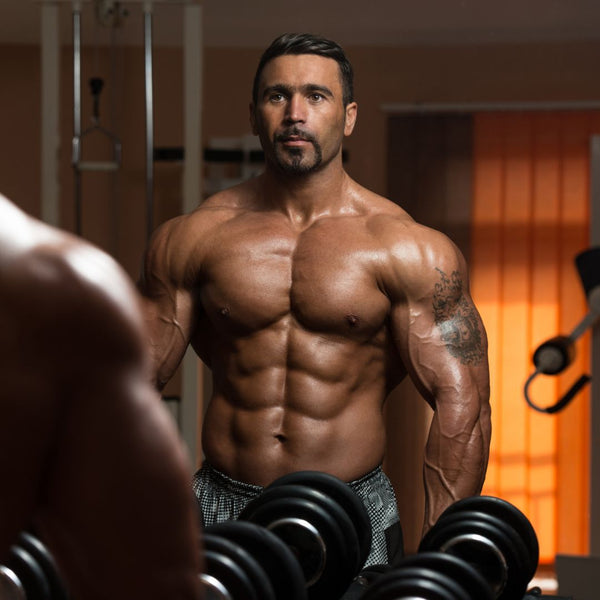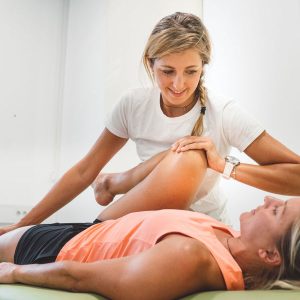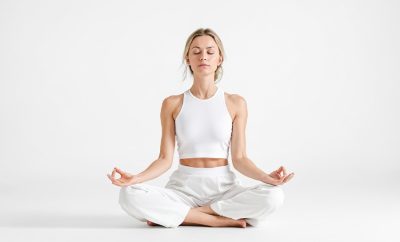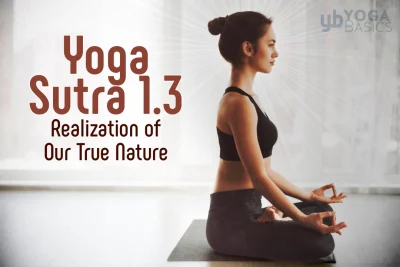
Many fitness experts preach the importance of incorporating multi-joint movements such as squats and presses into workout routines—I am guilty of this, too! However, as a certified personal trainer, I must admit that single-joint exercises also play an important role in any comprehensive fitness regimen.
Integrating isolation exercises into your routine can be highly beneficial if you’re a novice, a bodybuilder, a senior, or someone recovering from an injury. Whether your goal is to enhance muscle growth, improve body composition, or boost overall health, resistance training remains a fundamental component of achieving success.
Table of Contents:
- Intro
- Best Isolation Exercises for Every Workout Regiment
- Concentration Curls
- Tricep Kickbacks
- Leg Extensions
- Seated Leg Curls
- Lateral Raises
- Pec Fly
- Lat Pulldown
- Machine Glute Kickbacks
- Seated Calf Raise
- What Are Isolation Exercises?
- Isolation VS. Compound Exercises
- Frequently Asked Questions
- Wrapping Up
9 Best Isolation Exercises for Every Workout Regiment
While compound exercises can engage multiple muscle groups at the same time, isolation exercises zoom in on the individual muscles, which can help to address muscle imbalances and enhance overall muscle definition.
1. Bicep Isolation: Concentration Curls
What they do: Concentration curls are a personal favorite of mine that isolates the biceps by reducing the involvement of the surrounding muscle groups. The curling motion targets the bicep muscles, especially if you do them when seated on a bench with an arm braced against the inner thigh.
Why you should do them: This exercise is perfect for sculpting well-defined biceps muscles and correcting imbalances in your arm strength.

2. Tricep Isolation: Tricep Kickbacks
What they do: Tricep kickbacks, of course, isolate the triceps due to elbow joint extension. By using dumbbells, resistance bands, or cable machines, you can use this movement to target specific muscle groups in the back of the arms, adding to a fuller-looking arm and more even triceps development.
Why you should do them: It is beneficial for individuals, bodybuilders, or even powerlifters trying to tone and strengthen the triceps, especially when seeking aesthetics and better personal records.

3. Quadriceps Isolation: Leg Extensions
What they do: Leg extensions are my go-to exercise that targets the quadriceps by extending the knee joint against resistance. Typically performed on a leg extension machine or with resistance bands, this exercise isolates and develops the front thigh muscles.
Why you should do them: This movement pattern is needed by people looking to build strong and defined quadriceps while minimizing the involvement of other lower-body muscle groups, especially for people like me whose hamstring and glutes are more dominant.

4. Hamstring Isolation: Seated Leg Curls
What they do: Seated leg curls can isolate the hamstrings by flexing the knee joint against some form of resistance, usually a machine.
Why you should do them: This exercise is crucial if you are an athlete or anyone looking to improve hamstring development and fix muscle imbalances in the posterior chain.

5. Deltoid Isolation: Lateral Raises
What they do: Lateral raises isolate the deltoids, especially the lateral or side head of the shoulder muscles. By using resistance, this exercise helps create broader shoulders and improves shoulder health.
Why you should do them: Shoulder exercises like this one are valuable for sculpting boulder shoulders, strengthening, and keeping the joint healthy for future workouts.

6. Chest Isolation: Pec Fly
What they do: Upper body isolation exercises like the Pec fly isolate the pectoral muscles by mimicking the motion of hugging a tree. Performed on a pec fly machine, functional trainer, or with dumbbells, this movement targets the main muscles of the chest.
Why you should do them: Ideal for anybody who wants to build impressive chest muscles and achieve a more sculpted physique.

7. Back Isolation: Lat Pulldown
What they do: The lat pulldown is the king of upper back isolation movements for many fitness enthusiasts. It focuses on the latissimus dorsi muscles, which improve upper back development.
Why you should do them: Beneficial for those aiming to strengthen and define the upper back and particularly useful for those focusing on wider back aesthetics like bodybuilders.

8. Glute Isolation: Machine Glute Kickbacks
What they do: Machine glute kickbacks can be seen being used by many women who are trying to develop their glutes, and for good reason. It isolates the gluteal muscles by extending the hip against some kind of resistance.
Why you should do them: This exercise is almost essential for individuals looking to tone and shape their glutes, particularly useful for those who lack lower body aesthetics and functional strength.

9. Calf Isolation: Seated Machine Calf Raises
What they do: Seated machine calf raises target the calf muscles by flexing the ankles. By using a calf raise machine in a seated position compared to a standing position, you can effectively target the muscles in the calves without having to worry about other muscle groups being engaged.
Why you should do them: If you are an athlete who wants to build explosive power or just someone like me who wants to define your calf muscles without putting other muscle groups under load, then seated machine calf raises are a great option.
What Are Isolation Exercises?
Isolation exercises are a key aspect of strength training since they can zero in on specific muscles or muscle groups with minimal engagement of the surrounding muscle groups. At the same time, compound exercises recruit multiple muscle groups, which can be better for athletes and lifters who need to incorporate more than one muscle group during an exercise.
By deliberately targeting a specific muscle group, isolation exercises are particularly valuable for fixing specific muscle imbalances, refining muscular definition, and improving aesthetic quality.
Isolation VS. Compound Exercises
To build a well-rounded workout plan, it would be a good idea to have an understanding of the difference between isolation movements and compound exercises. Both types of exercises offer different benefits, and whether you should include them in a routine depends on individual fitness goals and preferences.
Compound Exercises:
1. Engage Multiple Muscle Groups Simultaneously:
Compound exercises are dynamic movements that activate multiple muscle groups at the same time. The combination of multiple muscle groups helps to focus on balance, coordination, and overall strength at the same time.
2. Promote Functional Strength and Coordination:
Compound exercises often mimic real-life movements, which is better for functional strength development and improved coordination. These exercises can also build muscle mass and improve the body’s ability to perform everyday tasks more efficiently.
3. Allow for Significant Calorie Burn:
Since multiple muscle groups are working, compound exercises have a higher energy expenditure. The increased calorie burn helps with weight management and also contributes to better cardiovascular health.
Examples:
Some of the best examples of compound exercises include squats, leg press, deadlifts, bench press, and burpees. These movements require coordinated efforts from other muscles and force you to focus on stability and range of motion.
Isolation Exercise:
1. Target Specific Muscles or Muscle Groups:
Performing isolation exercises, in contrast, isolates specific muscles or muscle groups, which allows for a more targeted approach to muscle development. This approach can be more beneficial for bodybuilders or individuals with underdeveloped muscles.
2. Address Muscle Imbalances and Weaknesses:
One of the main roles and benefits of isolation exercises is to improve muscle imbalances and weaknesses. By isolating specific muscles, individuals can tailor their workouts to enhance the strength and symmetry of each particular muscle group without having to worry as much about improper form.
3. Enhance Muscle Definition and Aesthetic Appearance:
Isolation exercises contribute to muscle definition, emphasizing striations and contours; this aesthetic refinement is especially valuable for individuals seeking a more sculpted and well-defined physique.
Examples:
Examples of isolation exercises include concentration curls, tricep kickbacks, standing leg curl machine, and lateral raises.

Frequently Asked Questions
Should I do compound or isolation exercises first?
The order in which you perform compound and isolation exercises depends on your fitness goals. If your primary objective is to build overall strength and improve functional fitness, I recommend starting with compound exercises.
Compound movements require more energy and engage multiple muscle groups at the same time, making them ideal for beginning a workout when energy levels are higher. On the other hand, if your goal is to target specific muscles, enhance definition, or address muscle imbalances, putting isolation exercises earlier in your routine may be more beneficial.
Are isolation exercises necessary?
Isolation exercises aren’t necessary for everyone. However, isolation exercises can be highly valuable for those seeking well-defined muscle aesthetics, addressing muscle imbalances, or targeting specific body areas.
Additionally, isolation exercises can be especially beneficial for anyone interested in bodybuilding or physique competitions, where muscle definition and aesthetics play a significant role in judging criteria. In such cases, including isolation exercises becomes an integral part of their training regimen.
Are There Any Bodyweight Isolation Exercises?
While many isolation exercises traditionally involve weights or resistance machines, several effective body weight isolation exercises can be incorporated into a workout routine. These exercises are especially useful for individuals who prefer training at home or lack access to gym equipment.
These exercises include glute kickbacks, leg raises, calf raises, and hip abductions.
How Many Reps Of Isolation Exercises Should You Do?
The number of reps for isolation exercises can vary; below, I have my recommendations that can give you a general idea of what will work based on your goals:
Muscle Endurance and Toning:
Aim for higher rep ranges, typically around 12-15+ reps per set.
Muscle Hypertrophy (Size):
Moderate rep ranges of 8-12 reps per set are what I commonly recommend for muscle growth.
Strength Building:
Lower rep ranges, such as 5-8 reps per set, are often used for building strength.
Wrapping Up
Incorporating isolation exercises in your fitness routine can significantly increase your chances of achieving a well-defined and aesthetically pleasing physique. These exercises target specific muscle groups, help correct imbalances, enhance muscle definition, and contribute to a balanced and comprehensive training program.
Whether you’re utilizing weights, resistance machines, or bodyweight exercises, the most important element to success is to design a workout plan that is in line with your personal goals. Looking for more inspiration for your workouts? Check out this post about the 8 Main Compound Exercises & Lifts For Building Muscle & Strength.





